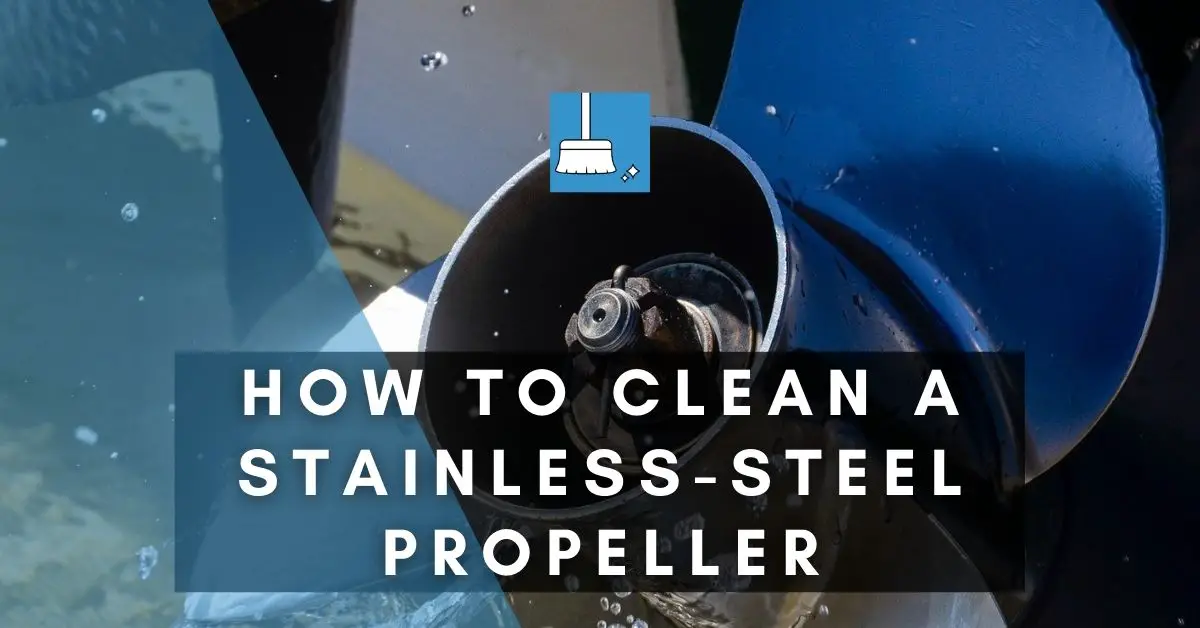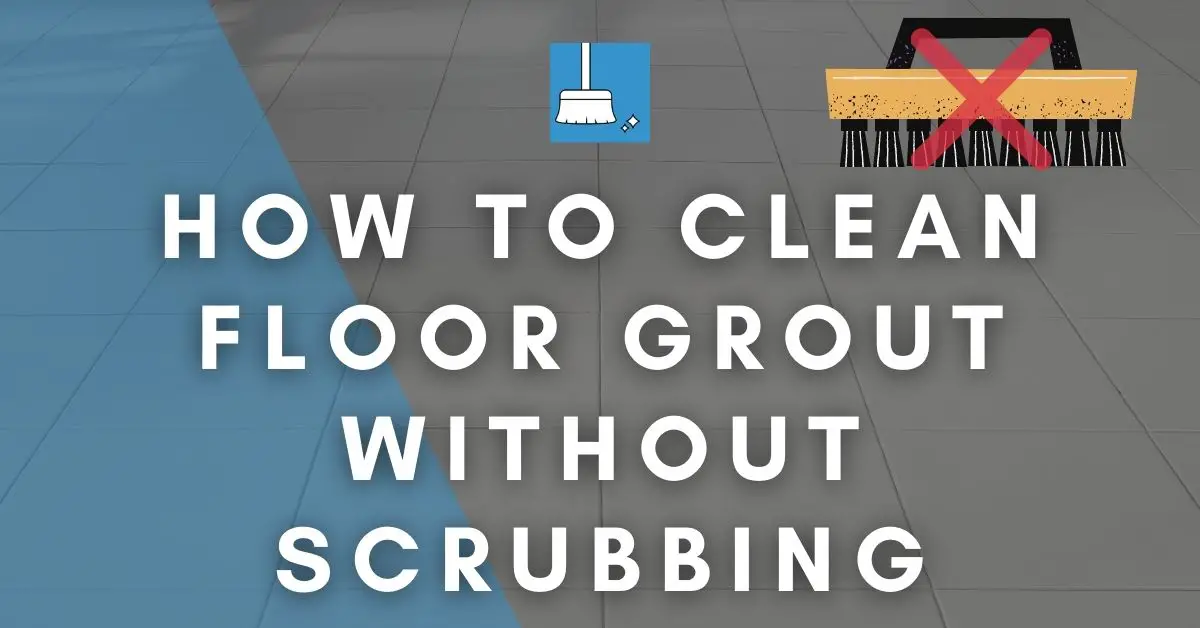Cleaning a propeller isn’t something a lot of boat owners know how to do. A lot may think that because their propeller is stainless-steel that it won’t get stained, or that they won’t have to clean it as often as they should.
But, because a lot of stainless-steel propellers contain iron and some other metals, in time surface discoloration like rust, will appear among many other things. When you don’t clean your propeller regularly you may see an overwhelming amount of rust, corrosion, or barnacles.
A lot of the time cleaning agents made specifically for boats, along with taking your propeller to the shop can be expensive. Here, we have a variety of different methods you can try to get your stainless-steel prop looking like new again.
Why Does My Stainless Steel Propeller Need Cleaning?
If you’re putting your boat in the water (which of course you are), you’re going to end up with some type of film on your propeller. The type of water that your propeller is in also plays a part in what your propeller can look like. People who tend to use their boats in freshwater have fewer problems with things getting on their prop.
Here are several different types of things that could damage the look and proper functioning of your propeller…..
1- Stains
As said before, because stainless-steel propellers contain iron and other metals, there is going to be surface discoloration or rust. Using your propeller in hard water areas is what can cause the most rust on your propeller.
2- Barnacles
If you allow your propeller to sit in water too long or don’t clean it for a long time then it’s almost guaranteed for your propeller to grow barnacles on it. The barnacles can be black or brown in color and can often cover the whole propeller.
These may or may not be hard to get off depending on what cleaning agent you use. But you’ll likely have to use some type of tool.
3- Damage
If you see cracks, dents, bends, and scrape marks, your propeller is corroding away, this usually occurs in heavily polluted water areas. Having this damage to your propeller can greatly affect the boat’s overall performance.
So however small or unnoticeable they may be, it’s something that you cannot ignore. You shouldn’t continue to use it anymore but rather take it to the shop.
However, if it is stainless steel and isn’t too irreparably damaged then it can still be restored.
How To Clean Stainless Steel Propeller (6 Methods)
Now that you know what is wrong with your propeller, we can now focus on fixing and cleaning your prop. A lot of the cleaning agents mentioned are low in price and highly effective.
Many of these methods do not require you to do any hard work, a lot are simple and require only a bit of mild scrubbing.
When using certain chemicals you should follow all instructions, be in a well-ventilated area, and use protective gear. Here are the 6 methods:
Method 1: Muriatic Acid
Muriatic acid is a cleansing agent commonly used to clean boats and propellers and works great on rust. It is an aqueous acid that contains hydrogen chloride which is extraordinarily strong. It is an absolute must that you wear protective gear and that you carry out this method in a well-ventilated area.
Muriatic acid can be found at places like Home Depot or your local hardware store. Be sure to follow the instructions closely, and make sure your propeller is already removed.
YOU’LL NEED
1- Muriatic Acid
2- Abrasive Sponge
3- Rubber Gloves
4- Mask
5- Goggles
6- Bucket
7- Dry Cloth
STEPS
STEP 1: Put on your gloves, mask, and goggles to protect yourself from the harsh chemicals, and make sure you’re in a well-ventilated area so that you can breathe.
It’s best to just be outside, but if you’re in a building, then open all the windows and turn on your ventilation system if you have one.
STEP 2: Fill one half of the bucket with plain water and the other half with muriatic acid to combine.
You don’t ever want to use straight acid on your stainless-steel prop as it can damage it even further.
STEP 3: Apply a bit of the solution onto your sponge and on the rusty areas of your propeller. Make sure the solution doesn’t touch your bare skin. Apply more of the solution to your prop, reapplying as it dries out, and let it sit for an hour.
STEP 4: Scrub the rust away with your sponge and then immediately rinse off the acid on your propeller. Don’t let it sit too long because it will start to eat its way through your propeller.
STEP 5: Once rinsed off dry the propeller off with a cloth and then reattach your propeller to your boat.
Method 2: Toilet Bowl Cleaner
While toilet bowl cleaner may seem like something odd to use for cleaning a boat propeller. But it is an ideal method for effectively getting off the rust and other types of film from the propeller.
Toilet bowl cleaner works well in getting out stains from hard water and mineral deposits, and can remove limescale. It’s not harsh and can be conveniently found in most stores.
The process for this method is simple and doesn’t require a lot of work.
YOU’LL NEED
1- Toilet Bowl Cleaner
2- Abrasive Sponge
3- Dry Cloth
STEPS
STEP 1: Wet your propeller with water and apply a generous amount of toilet bowl cleaner all over the propeller. Let the cleaner sit and bubble off the propeller.
STEP 2: Take your abrasive sponge and scrub in circular motions. If your rust or staining is more severe, add more toilet bowl cleaner and scrub more vigorously.
STEP 3: Rinse all the toilet bowl cleaner off the propeller and dry with a cloth. Reattach your propeller to your boat.
Method 3: Evapo-Rust Remover
Evapo-Rust is a non-toxic rust remover that can work without any sanding or scrubbing and is safe and easy to use.
Evapo-Rust contains no acid, solvents, or corrosives so there’s no need to mix it with anything. It does all the work for you and doesn’t require you to wear any protective gear.
You can even keep reusing the solution if it hasn’t turned black. Evapo-Rust can be found online and at your local store.
YOU’LL NEED
1- Rust remover
2- Bucket
3- Dry Cloth
STEPS
STEP 1: Take your bucket and fill it with Evapo-Rust, you don’t need to mix it with anything. Make sure to add a good amount of solution to ensure you can cover your whole propeller.
STEP 2: If your propeller can fit in the bucket, let it sit in the solution and soak. If not, pour the solution over your propeller, reapplying when it dries.
Don’t be afraid to touch the solution with your hands, it will not hurt you. You can choose to leave the solution on your propeller overnight or just let it sit for a few hours.
STEP 3: It’s not necessary to rinse off the solution, but you can if you want to. Dry the propeller off with a towel and reattach the propeller to your boat.
Method 4: White Vinegar
White vinegar contains acid that can help counteract buildup like barnacles, and dissolve scum and brine. It’s safe and easy to use on your stainless-steel propeller and is strong.
Distilled vinegar is ideal because it doesn’t contain any coloring agents, but you can use apple cider vinegar as well.
White vinegar also acts as a degreaser so there won’t be any grime left on your propeller. It’s a common household item that you likely already have in your home and usually isn’t more than a dollar.
YOU’LL NEED
1- White Vinegar
2- Abrasive sponge
3- Putty Knife (for barnacles)
4- Bucket or Bag
5- Dry Cloth
STEPS
STEP 1: To degrease your propeller, take your white vinegar and apply it to a sponge, then wipe down your propeller.
STEP 2: Take your bucket or your bag and fill it with white vinegar. Take your propeller and put it in the bucket or bag filled with white vinegar.
Make sure the propeller is fully submerged in the vinegar. Pouring it over won’t work since white vinegar isn’t a harsh acid.
STEP 3: Leave the propeller in the vinegar for a few hours or leave overnight.
STEP 4: If your propeller still has barnacles left on it, use your putty knife to scrape the barnacles off.
Since your propeller is stainless steel, the putty knife shouldn’t do any harm to your propeller.
STEP 5: Apply some vinegar to your abrasive sponge and then start scrubbing away any excess left on your propeller.
STEP 6: Thoroughly rinse off your propeller, then take a cloth and dry it off. Reattach your propeller to your boat.
Method 5: Rubbing Compound, Epsom Salt, and Bumper Polish
This method doesn’t mention any specific brand products, as you can use any brand. This method is simple and safe and is a gentler way of cleaning your propeller, along with giving it more of a shine. These products can be found at local hardware stores.
YOU’LL NEED
1- Rubbing Compound
2- Abrasive Sponge
3- Epsom Salt/CLR
4- Bumper Polish
5- Three Cloths
STEPS
STEP 1: Take your abrasive sponge and dip it in the rubbing compound. Scrub your propeller removing all rust and grime until it’s clean.
STEP 2: Take 1 cup of Epsom salt and mix It with a gallon of water, if you need an alternative, you can replace the Epsom salt with a lime and calcium removal chemical (CLR). Take your cloth and dip it in the solution, then wipe down your propeller.
STEP 3: Apply the bumper polish with a clean cloth, wiping in circular motions to ensure complete coverage.
Let the polish haze, then take another clean cloth and wipe any excess off your propeller. This helps protect the propeller and reduce recurring buildup.
Method 6: Rough Cast Mag Wheel Cleaner
Rough Cast Mag Wheel Cleaner is recommended by YAMAHA who are experts in cleaning propellers. (Source) So, this should be guaranteed to work if you follow all instructions.
This method is simple and doesn’t require you to do much or to have too many materials. This cleaner is great for cleaning stainless steel and is fast-acting. You can find this product at your local hardware store.
YOU’LL NEED
1- Wheel Cleaner
2- Abrasive Sponge
3- Dry Cloth
STEPS
STEP 1: In a well-ventilated area, spray the Wheel Cleaner onto your propeller. Let the cleaner sit on the propeller for the time specified on the bottle. It’s usually 30 seconds for most products.
STEP 2: If your staining is more severe, take your abrasive sponge and scrub your propeller lightly in circular motions until it’s clean.
STEP 3: Rinse off your propeller with fresh water and dry with a clean cloth. Reattach your propeller.
Maintaining Your Stainless-Steel Propeller

A few things to keep in mind:
1- You need to regularly remove your propeller to ensure nothing has got caught in it, like a fishing net.
2- You need to regularly wash or rinse off your propeller, even if there isn’t much rust or grime on it. This keeps red-iron oxidation from accumulating. Too much buildup or wear and tear can greatly diminish the performance of your boat.
3- The shine on your propeller will diminish over time, to keep that shine you need to regularly remove your prop and add a fresh coat of paint or shine.
Conclusion
You can now ride easy knowing that your prop is in good condition and that you know how to properly maintain it in the best possible condition.






